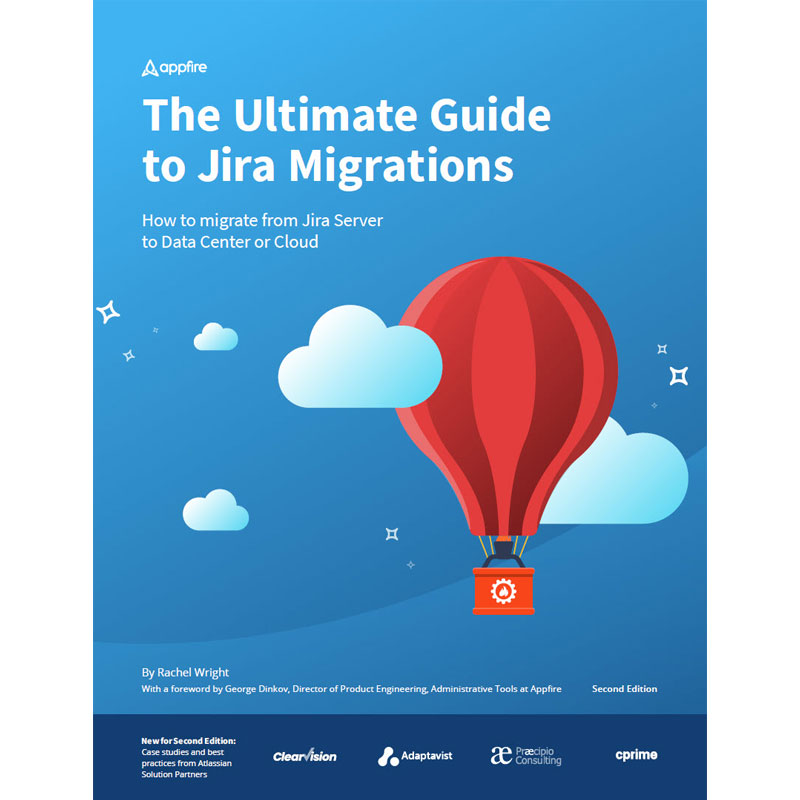In October 2020, Atlassian announced they will stop selling new Server licenses on February 2, 2021. Further, they will end support for Server products on February 2, 2024. This means customers like me will need to
switch to Data Center, migrate to Atlassian-hosted Cloud products, or make alternate plans.
It’s no surprise that this announcement brought a mixed reaction from the user community. There was a lot of initial shock and emotion as the online forums erupted with commentary. It took me a while to process all the information and I’m finally ready to share my opinions.
Before I do, there’s something you should know. It’s no secret; I’ve been in a relationship with Jira since 2011.

But before I discovered Jira, I was in love with Salesforce. I fell in love with both applications for the same reasons: both were infinitely flexible and let me configure them exactly the way I wanted. I could adapt the software to fit my needs without changing my behavior.

I attended a Salesforce user conference and brought home a giveaway that I still have today. This little mint container displays Salesforce’s trademark “no software” logo. At first I didn’t understand. How could a software company be anti-software? The logo conveys that Salesforce said “no” to the familiar concept of hosted software and “yes” to cloud infrastructure instead. I acquired this item sometime around 2005. So ~15 years later, the fact that the software industry has pivoted to leverage the cloud is not a huge surprise. Cloud proponents might ask why Atlassian took so long to make their announcement! Don’t get me wrong, I’m a HUGE Jira Server fan and I will always love and prefer it. But asking Atlassian to develop and support multiple deployment methods, with different code bases, features, and terminology is a terrible long term business plan.
Cloud is Inevitable
This announcement was ultimately inevitable but it doesn’t mean it will be an easy road for everyone. There are certainly organizations with a real or a perceived aversion to cloud software. Some industries have complex governance and compliance regulations to consider and there are data residency concerns and latency issues to resolve. There are consultants facing real challenges with helping their clients through this transition. There are Jira Server administrators wondering if moving to Cloud means their role is unnecessary or redundant. (Not at all! Cloud applications need competent administrators to manage and maintain the configuration. There are just a few things you won’t need to do anymore. Example: a manual re-index.)
Some Options
For customers who can afford it, switching from Server to Data Center can be as easy as simply pasting in an updated license key and installing Data Center compatible apps, assuming they exist. Jira Data Center has some attractive features, like clustering (multiple applications), archival, high availability, redundancy, disaster recovery, etc, but you don’t have to use them. You can simply run Data Center as non-clustered (single) application.
For customers who are open to migrating to Cloud-hosted products, there are cost, feature, app, and user interface differences to consider. Migration is not a simple weekend project, but with adequate analysis, planning, and testing, it is doable.
I have to give Atlassian credit for announcing this change years in advance. At the very least, we all have adequate time to prepare or make alternate plans. They have visibly invested in their Cloud infrastructure and there’s still a lot of time before “end of life” to address the outstanding concerns. Atlassian has provided migration information, created a new Cloud tool to help move data, and publicly addressed our gripes – although I understand that not all will be satisfied with the responses. Some customers feel forgotten, disrespected, or excluded. I can understand that perspective and don’t intend to disregard or minimize those feelings.
Pricing Concerns
Many of us are concerned with price increases. The Data Center cost is simply out of reach for some organizations. As a consultant, I keep a Jira Server instance running simply to take screenshots, create training materials, and support my clients using Server. This is a test instance and I am the only user. My annual starter license cost is $10 USD. If I understand correctly, to simply change to a Data Center license, my annual cost increases to over $20,000 USD. This is simply impossible and unreasonable. If true, it means small consultancies like mine can’t properly support Data Center clients in the future. It’s crazy to think that I can’t afford the software I love so much and help others manage! I’ll have to try to keep my sandbox Jira Server instance running as long as possible or until it’s no longer useful for its intended purpose. For charitable and non-profit organizations, I’m happy to see that free Data Center licenses are now available.
Change is Constant
Change is hard. I understand and sympathize. But change is also constant in this world. The only thing you can control is how you react to change. I’m trying to improve the way I personally respond and in this situation, I’m choosing to find ways to see this as a positive opportunity. For example, I have the ability to help organizations determine the best path for their unique needs. I can help companies reduce risk during their migrations. And I can learn to love Jira Cloud as much as Server – or at least try.

If you plan to change to Jira Data Center, migrate to Jira Cloud, have multiple Jira Server applications to consolidate, or simply feel lost about what to do next, there’s a new resource just for you! I teamed up with Appfire to create The Ultimate Guide to Jira Migrations: How to migrate from Jira Server to Data Center or Cloud. This free 210 page ebook is the master resource to answer all your migration questions and provide a comprehensive plan to follow.
Regardless of your situation, take a deep breath, and try to work towards arriving at the “acceptance” stage of this announcement. You’ve likely survived bigger software challenges and I have no doubt you will get through this one as well. Until then, I wish you the very best of luck, success, and prosperity in the new year.

Hi Rachel,
as I can give you “Thumps Up” on many points, one has to point out, how Atlassian is “selling” this to customers. They talk about a “Journey to the Cloud”, while, alas, it’s just about making more money. Why didn’t Atlassian just say: “Well, our server licensing model is too cheap, we want more cash from our dearest customers…” That’s the main reason as Atlassian gave us an alternative: Cloud or Data Center. A “Journey to the Cloud” would include, even when pushing some (oh, the largest…) customers off, killing server and DC, putting all efforts on cloud dev. It’s got such a bad taste… And to be honest, customers in Germany are pi%$ed about this. For us, switching to Cloud (with less functionality of the apps we use), the bill will be about 25.000 USD higher than with server. Data Center would be about 35.000 USD higher. And this is only for Cloud Premium, not Enterprise, what we actually really need, because of data security/residency concerns. So for us, right now, we know that we’ve got 4 more years on server & enough time to check alternatives (although there are close to none…).
Off cause – Cloud is here to stay.
What mostly bothers me, is that no one is discussing the selected architecture of the cloud, pointed out in https://community.atlassian.com/t5/Jira-Core-questions/SLA-for-Addons-in-JIRA-Cloud/qaq-p/1332913. All apps are not running in Atlassians cloud, but somewhere else and data are transported out of Atlassians cloud.
This really concerns me, no SLA, no gurantees and where is my data (at all) for all add-ons. Not event Adaptavist has a SLA for their Cloud Add-on.
And with the Schrems II verdict, cloud is currently a no go for EU companies as I read it…. both the Atlassian cloud and for sure all add-ons runnning in AWS, Azure, Datacenters in other locations “unknown” to Atlassian…